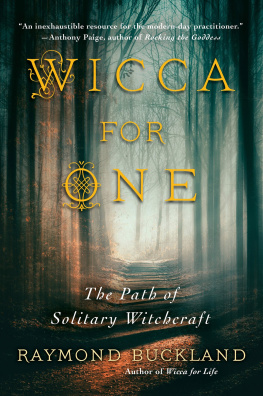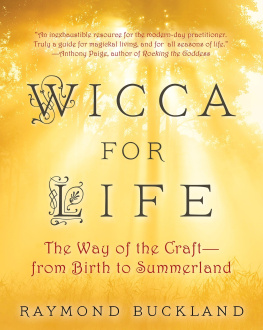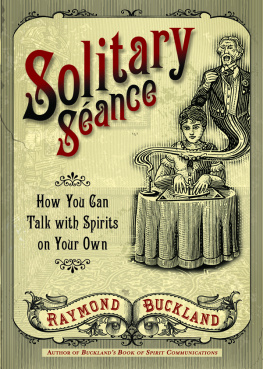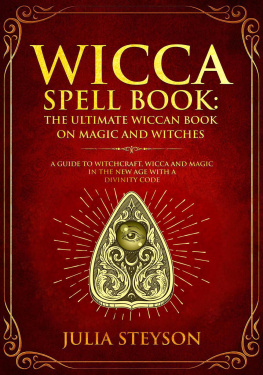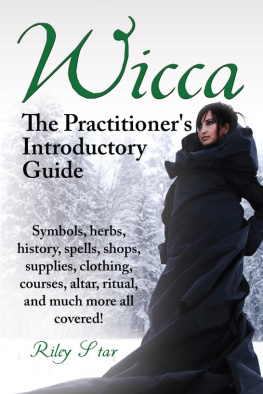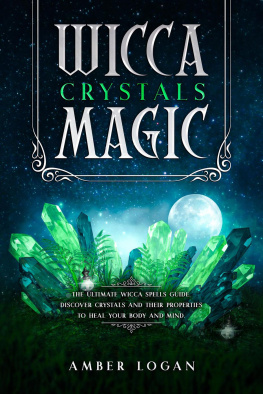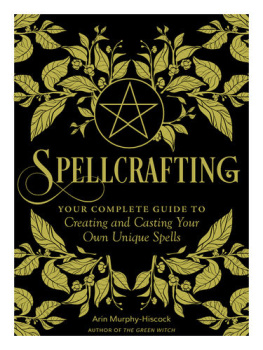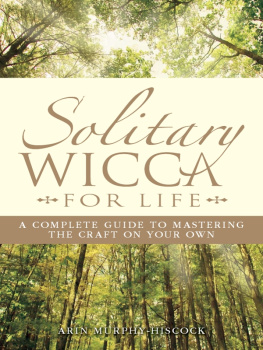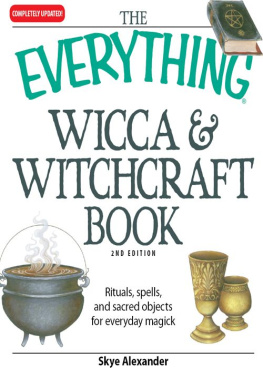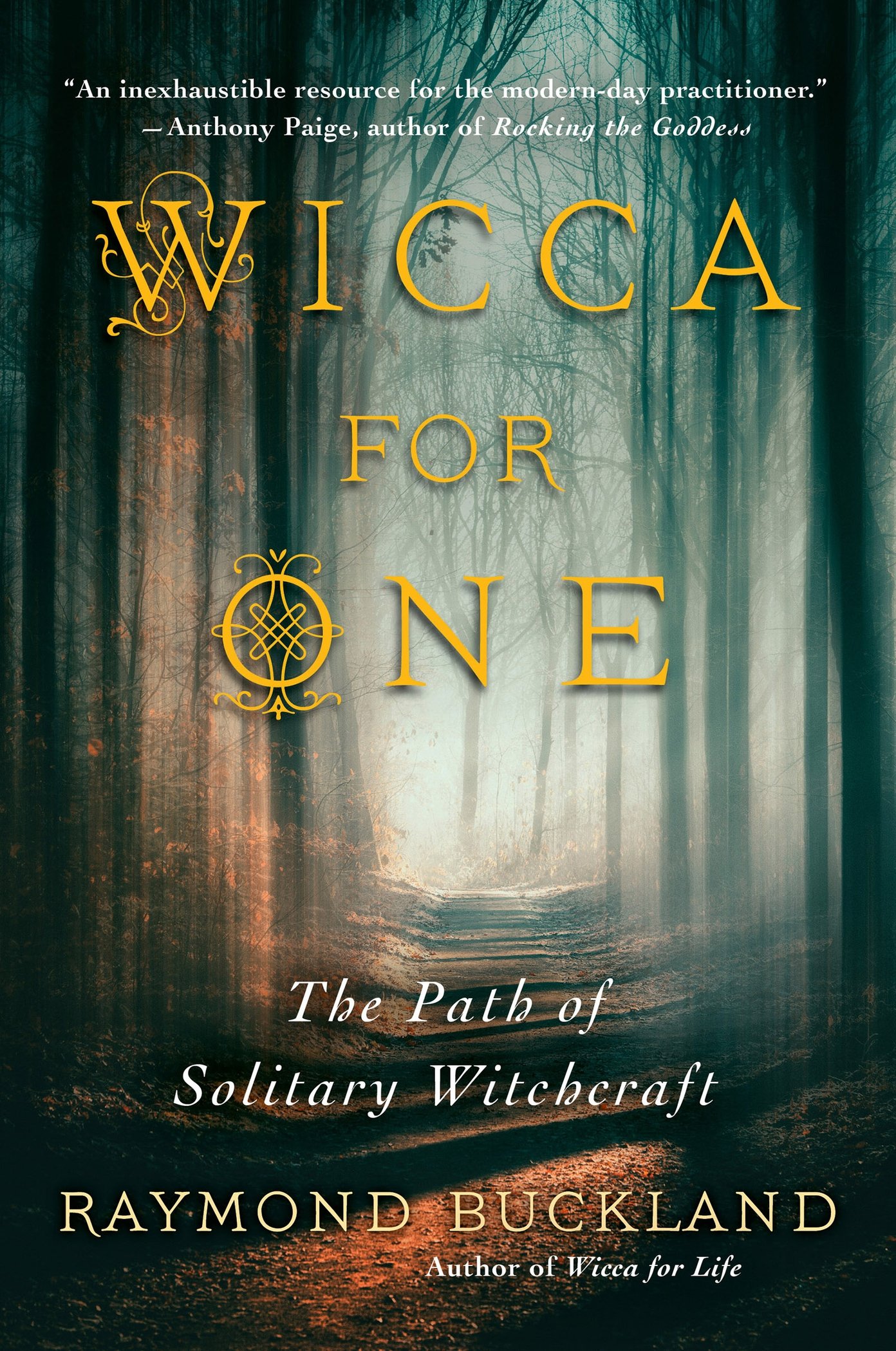Glossary of Wiccan and Magical Terms
This glossary contains those terms mentioned in the above text plus other words and phrases you are likely to come across in the world of Wicca and certain aspects of magic.
Affirmation: A word, short phrase, or sentence that encapsulates thoughts and ideas in a positive statement. Repeated constantly, the affirmation gets down into your unconscious mind, reinforcing and empowering.
Amulet: A magical charm for protection, power, healing, and so on, utilizing a natural object such as a stone, nut, shell, piece of wood, or similar item.
Asperge: To sprinkle sacred water for purification, as part of a ritual. This might be done with an aspergillum or with the fingers.
Aspergillum: Tool used for asperging. Can be as simple as a few twigs or a spray of evergreen, or can be an elaborate, commercially produced metal object. It is dipped into the water and then flicked at the person or object to be asperged.
Astral: A plane of existence, invisible to the naked eye, that coexists with the physical realm.
Astral Body: An etheric copy of your physical body (and that of all living things) that extends slightly beyond the physical, such that a psychic may see its outline as an aura.
Astral Projection: To separate your astral or etheric body from your physical body and travel about the astral plane. It is said that many dreams are actually memories of astral travels.
Atham: Ritual knife used as a tool in Witchcraft and ceremonial magic. Styles, handle colors, and markings on the knife vary with Wicca traditions.
Aura: Light emanating from living beings and vibrating at frequencies beyond the normal range of vision. It indicates the position of the etheric body. The color of the aura may vary, dependent upon a persons health, mood, emotions, and so on.
Balefire: Traditional fire lit for religious celebratory purposes during Sabbats. In medieval times there were balefires lit on hilltops across the length and breadth of Europe.
Bane: Negative energy that harms and destroys. Often associated with evil and/or applied to poison.
Banish: To dismiss spirits from a ritual circle.
Bell: A ritual tool used in Witchcraft and various forms of magic to alter the vibrations of the sacred area. It may or may not be engraved with sigils and is consecrated for ritual use.
Beltane: One of the Greater Sabbats of Witchcraft that falls on May Eve. Also known as Roodmas, Walpurgisnacht, and Cethsamhain. It marks the shift in emphasis from God to Goddess.
Besom: A broom, sometimes used in Witchcraft rituals. Some Handfasting ceremonies include having the wedded couple jump over the besom, for luck and to promote fertility. It is used by some Witches as an equivalent of the staff.
Boleen: Also spelled boline, or bolline, this is a knife with a curved blade used strictly for cutting herbs.
Book of Shadows: The book that contains all the rituals, spells, recipes, and other pertinent information of a Solitary Witch or of a coven. It is named for the time (during the persecutions) when Witches had to meet in the shadows and were first starting to record what had previously been a purely oral tradition. It is always handwritten by the Witch who owns it.
Broom: Equivalent of the staff, for some Witches. Generally referred to as a besom.
Burin: An awl-like tool used for marking the various signs and symbols on objects for the purposes of magic (for example, writing names on candles).
Cakes and Wine: Also known as Cakes and Ale, this is the rite in which the gods are thanked for the necessities of life. It involves the blessing of wine/ale and cakes, and consuming them, and usually takes place about halfway through a Wiccan ritual, although it can be performed as a ritual in itself.
Calling the Quarters: A part of the ritual construction of a magical circle, when the four elements of air, fire, water, and earth are called upon to be a part of the sacred space.
Casting the Circle: The consecration of an area in which a Witch or a coven of Witches will be holding a ritual.
Cauldron: Associated with the British Celtic goddess of the underworld, Keridwen, or Cerridwen, the cauldron was one of wisdom and enlightenment. It also symbolizes rebirth and transmutation and represents the womb of the Goddess. It is often used in Wiccan rituals, sometimes containing water and sometimes holding fire.
Censer: Also known as a thurible, this is the instrument in which incense is burned during rituals. It can vary from a simple container for a bed of sand, on which a hot coal can be placed, to an elaborate swinging device suspended on chains.
Centering: Done by some Witches prior to meditating or to doing magic, centering is the process of focusing on your spiritual center, allowing all mundane issues to fall away leaving calm and serenity.
Ceremonial Magic: A form of magic that involves complex ritual, centering on the conjuring and commanding of spirits, or entities, in order to accomplish various ends. The tools, dress, and procedures of ceremonial magic are laid down in various ancient books known as grimoires and are rigid and extremely complex. Conjurations are often in Latin, Greek, Hebrew, or other languages. Because of the dangers of trying to control the actions of the entities conjured, intricate circles of protection are created and employed as are talismans, sigils, and words of power.
Chakra: An area of power within the body. There are seven such centers. By focusing the mind on these areas, in a predetermined order, and energizing them, kundalini power is raised, which is a useful tool when working magic.
Chalice: The name given by some Witches to the goblet used in rituals such as Cakes and Wine. It is regarded as one of the four elemental tools, representing the element of water. In effect a miniature cauldron, it is also viewed as representative of the womb of the Goddess.
Chant: A combination of words in a rhythmic pattern, used to generate power when building toward the working of magic. Chanting can bring about an altered state of consciousness.
Charcoal: Powdered incense is burned on a charcoal briquette. Do not use the briquette sold for use in barbecues, however, for they give off noxious gases. Charcoal briquettes made specifically for the burning of incense are obtainable from religious supply houses.
Charge, The: Short for The Charge of the Goddess. This is a popular discourse given by a Priestess to her coven, in rites when she specifically represents the Goddess. It originated in Charles Godfrey Lelands book Aradia, the Gospel of the Witches of Italy (1899) and was the address given by the goddess Aradia to her followers, instructing them on how and when to worship her. For Gerald Gardners (Gardnerian) Book of Shadows, Doreen Valiente wrote a variation on this, which is the version most often used by todays Wiccans.
Charge, To: To charge an object is to pass power into it so that it will serve for ritual and/or magical purposes.
Charm: A talisman or amulet charged for magical purposes. Its focus may be for love, protection, to ward off evil, to promote fertility, or for any one of a number of purposes. Also, a spoken spell or incantation.
Cingulum: Name for the ritual cord used in magic. In some traditions it has to be nine feet in length and red. Other traditions have different specifics. Some use different colors to denote different degrees of advancement. It is often worn around the waist and is sometimes called a girdle. It can be used in different ways, such as to store magical energy by knotting that energy into the cord to be released at a later time and place. It can also be used more mundanely to measure and help describe the circle area.

